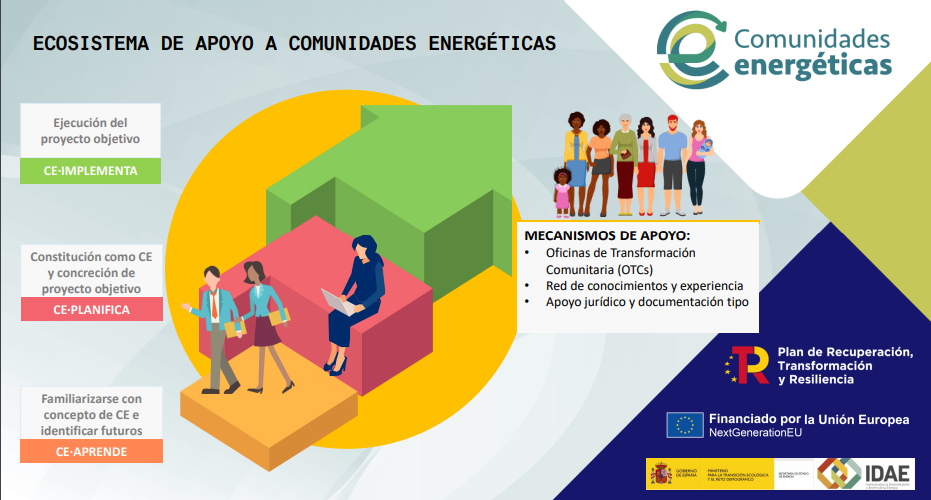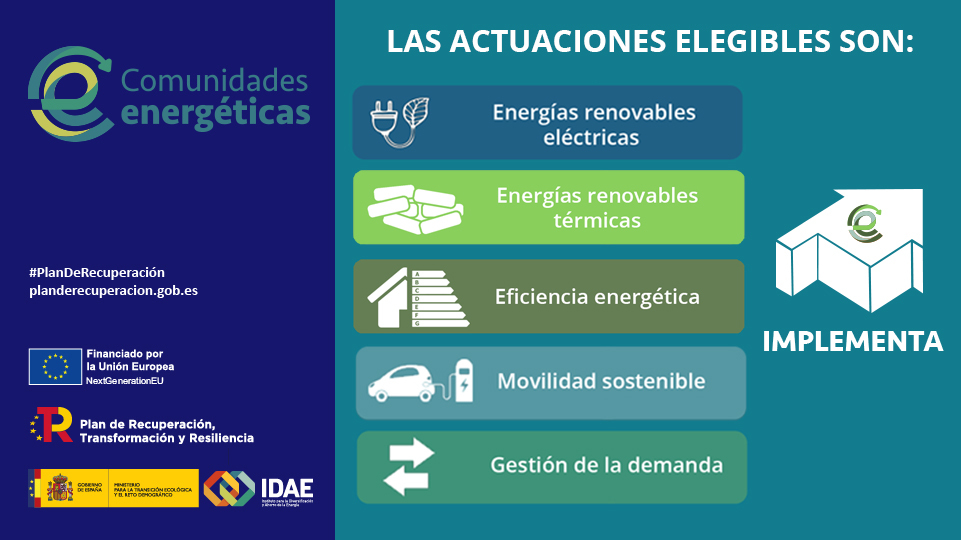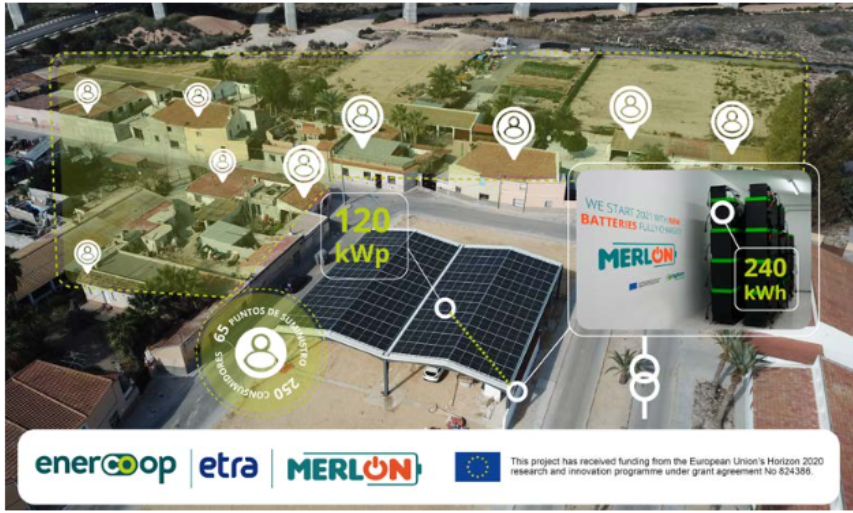Photovoltaic (PV) energy policies can vary from one country to another and can change over time. In general, policies are designed to encourage the development and deployment of a technology by providing financial incentives, setting performance standards, and creating frameworks for the integration of systems into existing grids.
In Spain, PV policy has been an important driver of the growth of the solar industry. The country has a strong solar resource and has implemented a number of policies and programs to support the development of PV technology. The following article provides an overview of the evolution of PV policies in Spain.
Past and present PV policy framework
In the past Spanish policy framework did not allow feeding in the excess of PV into the grid (users were being charged for it). The Royal Decree 900/2015 said exactly “the invoicing of the supply and the tolls for access to the networks will be carried out on the hourly demand, and on all the demanded power, in accordance with the provisions of article 9 of Royal Decree 1164/2001, of October 26 and using for these purposes, the meter located at the border point of the installation. The hourly demand may not be negative in any case […] The consumer must pay for the excess electrical energy the charge for other system services in accordance with the provisions of article 18 of this Royal Decree.” This policy was known as "solar tax" or "impuesto al sol" in Spanish. After many sanctions on solar consumers and the upcoming EU Renewable Energy Directive, Spain changed the Royal Decree 900/2015 to the Royal Decree-Law 244/2019, to promote self-consumption and clean energy.
With this new royal decree, all users of solar panels are exempt from paying any related tax for their photovoltaic installation. With this law:
- users can join collective self-consumption if there are within a distance of 500 meters (using the grid) or if they share the 14 digits of the cadastre.
- The licensing of the installation is only a minor notification to the municipality and they need to register the installation (with a unique code per installation) with the distributor.
With all these measures the legislative framework allows users to create individual and collective self-consumption installations in an easy way if their installation is lower than 100 kW. A FAQ list was created by the Institute for the Diversification and Saving of Energy, IDAE, of Spain. In December 2022 this law was updated with an increase to 2000 meters the limit to be able to carry out self-consumption installations (in roofs) through the network. In other words, the limit of 500 meters for self-consumption is eliminated, four times that same distance. Furthermore, other changes were:
- More than one licensee could be using the same roof with different photovoltaic installations.
- Includes the flexibility of direct lines for industrial self-consumption with the expansion to allow generation and consumption to be from different companies.
- Renewable energy communities can be the “Self-consumption manager” of a representative of consumers
- Administrative simplification for any small renewable generation facility up to 500 kW.
Furthermore, since October 2021, the Royal Decree 19/2021 modifies the “horizontal property law” to be able to install photovoltaics or any energy installation without the need of having all dwellings of a multiapartment building on board. This dictates that, in order to carry out a photovoltaic installation, the project must be approved by the majority of the owners and the participation fee in the assembly (see table for more details of percentages). The installation will go ahead as long as the total annual cost, discounting the subsidies on solar panels and applying other concepts such as financing, "does not exceed the amount of nine ordinary monthly payments of common expenses." For installations of solar panels for private use within a community of neighbors, of one or several owners, it will be necessary to request permission from the community for the solar panels. The approval of a third of the owners and the participation fee will also be required. In these situations, the costs of installing and maintaining solar panels will not affect the entire community, only those who voted in favor and are going to take advantage of the photovoltaic installation. Those who would like to join this common element after the installation is done must pay the amount corresponding to an update and the corresponding legal interest. This royal decree can be summarized in the following table:
|
|
Support from Community board |
Support from all property owners of the dwellings |
Payment obligation/liability |
Benefits |
Posibilities to expand installation |
|
Common areas |
50% |
50% |
All |
Benefits to all (proportionally to m2 or among the number of dwellings) |
- |
|
For private use (e.g. 1 panel for one house in common roof) |
1/3 |
1/3 |
Only those people interested |
Only those people interested |
Payment proportional to interest |
What can a municipality do?
At the local level, municipalities are also favoring PV installations. For instance, Sant Cugat del Vallès municipality (and other municipalities, check some here) created local ordinances and taxes reductions for collective self-consumption installations:
- Exemption from the planning tax (Fiscal Ordinance no. 12 in force, art.4.1.3)
- Fiscal benefit 1 (BF1): Optional bonus of up to 50% of the Real Estate Tax (IBI) fee, for a maximum of 7 years (for solar thermal installations) and a maximum of 5 (for solar photovoltaic installations). The total amount of the bonus will be determined based on the cost of the installation, and in no case may it exceed 50% of this cost. The determination of the bonification is the following:
- PV for supplying common building energy needs (e.g. elevator, lighting of halls, etc.): the bonus will be from 5% for all linked homes as long as the photovoltaic solar installation has at least an electrical production of 50% of the energy expenditure of common services
- Photovoltaic installation for common services and homes: the bonus will be of 50% for all housing linked to the investment for a maximum of 5 years. The electrical production assigned to the common services of the building cannot be invoiced to the community of neighbors and must reach 50% of the energy expenditure of common services.
- Photovoltaic installation for the individual consumption of a single home: the bonus will be a maximum of 40% on the full fee, as long as the solar installation photovoltaic has at least 50% electricity production for self-consumption of the energy expenditure of the home where the electricity production is overturned. In the case that, with the final distribution of the roof surface, the minimum production of 50% of energy expenditure, the IBI bonus will be 20%
- Fiscal benefit 2 (BF2): Optional rebate of 95% of the construction tax quota and Installation and Works for works that incorporate a reduction in the energy demand of the building, as long as these are not carried out in properties required by legal prescription. This bonus will be applied exclusively to the part of the cost of the work attributable to constructions, installations or works intended to reduce energy demand.
- Fiscal benefit 3 (BF3): Optional rebate on the municipal quota of 40%, during the first two years, and 20% during the third and fourth year, of activities located in buildings that use or produce energy from voluntary installations for the use of renewable energies or cogeneration systems.
Note (BF1 and BF3): The IBI bonus and the IAE bonus are incompatible. In the case of requesting both, the higher amount will be granted, if applicable.
More information in: Benefis fiscals per instal·lació voluntària d'energia solar tèrmica, fotovoltaica i altres energies renovables en edificis existents
Social Innovation: Energy communities
There is no transposition of EU directives in Spain about energy communities yet. Nevertheless, "local energy communities" are part of the integrated national energy and climate plans of Spain (PNIEC) in the measure 1.13, in which "local energy communities" are defined. The definition integrates both concepts of the EU directives: the Citizen Energy Communities (CEC - found in directive 2019/944) and Renewable energy communities (REC- found in directive 2018/2001). The REC definition is also found in the Spanish legal framework, in Royal Decree-Law 23/2020, of June 23 of the Electricity Sector. The Renewable Energy Communities are defined as "legal entities based on open and voluntary participation, autonomous and effectively controlled by partners or members who are located in the vicinity of the energy projects owned and developed by such legal entities, whose partners or members are individuals, SMEs or local authorities, including municipalities, and whose primary purpose is to provide environmental, economic or social benefits to their partners or members or to areas locations where they operate, rather than financial gain.” These communities need to be a legal figure (cooperative, association, etc.) and can be based on facilities of any energy vector, as long as it is renewable. They need to be local and production needs to be in proximity to the users. The above-mentioned regulation about collective self-consumption is used to define one of the activities of energy communities (PV production and energy sharing among neighbors) and proximity can be defined as "1km" (based on this regulation). Nevertheless, an energy community could be greater than that and could consist of various "collective self-consumption" patches (each of which should have a 1km radius of buildings integrated).
To promote energy communities (any kind), the Institute for the Diversification and Saving of Energy, IDAE, of Spain, has defined a program with several programs:

Figure: Energy communities ecosystem support framework (Source: IDAE) -> In green "CE- Implement", in red "CE-Planifica" (planning), in orange CE-APRENDE (learn), and on the right "supporting mechanisms".
- CE-APRENDE: with the objective of creating the energy communities concept and identify future partners and users.
- CE-PLANIFICA: to plan and constitute energy communities.
- CE-IMPLEMENTA program: is part of component 7 "Deployment and integration of renewable energies" of the Recovery, Transformation and Resilience Plan for the execution of the Next Generation EU funds, which identifies energy communities as a key actor in the transition energy, providing these entities with the necessary financial capacity to develop construction activities and start-up of facilities linked to social participation in the energy sector. 4th calls have been organised already (one is still open) with up to 40M€ of funding.
- SUPPORTING MECHANISMS: Community Transformation offices + networks and juridic support
- A specific program has been implemented and it is called "CE-OFICINAS" to provide funding to Community Transformation Offices for the promotion and revitalization of energy communities. One call is open for funding until 23rd of January of 2023 https://www.idae.es/index.php/ayudas-y-financiacion/comunidades-energeticas/ayudas-oficinas-de-transformacion-comunitaria-para-la

Figure: Eligible projects on energy communities on the "CE implementa" program and funding calls were: Renewable energy technologies (electric and thermal), energy efficiency, sustainable mobility, and demand-response. 45 projects were funded in the first call. On the second call, 39 projects were funded.
One of the Spanish pioneers is the Energy Community of Crevillent.
COMPTEM Crevillent Electric Cooperative
Enercoop is a business organization with a presence in practically the entire value chain of the electricity sector: 100% renewable energy production, distribution to the municipality of Crevillent (Alicante) through its own network, specialized marketing service, for the entire national territory, which includes the domestic and business segments, representative agent in the electricity market for renewable production facilities and energy purchasing group for other trading companies. Cooperative Enercoop manages the community of Crevillent. Citizens join the cooperative.
During the second half of 2020, the domestic 2.0A tariff of the cooperative stood at €0.089/kWh, even below the option regulated by the Government of Spain, Voluntary Price for Small Consumers (PVPC), with the added advantage of including energy of renewable origin, face-to-face attention and social benefits for cooperative members (Annual Report, 2020).
COMPTEM (Community for the Municipal Energy Transition) is the project promoted by the Enercoop Group and supported by the Crevillent City Council, with the aim of facing the challenge of the energy transition from the municipal level and converting this municipality of 30,000 inhabitants in an energy community of reference in Spain and at European level. In this community, consumers, the citizens themselves, will be able to benefit from the advantages that the collective and shared use of energy produced from renewable sources implies, thus becoming prosumers.
The photovoltaic is installed on roofs of the administration and public spaces. In 2020, the implementation of the first collective self-consumption pilot cell from photovoltaic solar energy located in the Crevillente district of El Realengo was completed. This first action has made it possible to shape the model from the technological, economic, administrative, legal, and social point of view to later progressively extrapolate it to the rest of the population areas, as if it were a honeycomb, with nodes of generation every 500 meters, in accordance with previous regulation:

The neighbors have signed an agreement that by allowing the community to apply in the district of Realengo (Crevillent) they obtain a 20% recovery of the electricity bill, in addition to social benefits such as:
- local help
- Combine recreational/sports use and a photovoltaic installation in a canopy
- cooperative savings: an economic item has always been added for the Fund for Education, Training and Promotion of Cooperatives, which is managed by the Fundación de Cooperativa, with social actions such as:
- Scholarships for students
- A free funeral home for all members of the Cooperative
- Support for the Residence for the Disabled and the La Purísima Nursing Home.
- More at https://www.grupoenercoop.es/obra-social/
- The city council participates in the cooperative, ceding the public space for the photovoltaic installation
- The only restriction is that the self-consumption of the neighbors is distributed so that the generation and consumption are not more than 500 meters away (now, with the last changes of the regulation the limitation is 1 km)
- An APP so that users can access to see their consumption has been developed in the community
Sources: https://www.grupoenercoop.es/la-comunidad-energetica-local-de-cooperativa-electrica-de-crevillent-en-rtve/ (min 26)
https://www.youtube.com/watch?v=O5nqpxCSmrM
https://www.grupoenercoop.es/memoria-anual/
What can a municipality do to promote energy communities?
There are several solutions that a municipality can do. First, have local ordinances that are favorable for PV installations (with tax reductions like Sant Cugat). Second, if the national legislation is not favorable, then the municipality (joining with other municipalities) can try to dialogue with the governmental entities to try to change and co-design the legislation. Furthermore, municipalities can offer public spaces for PV installations. To be legally on the safe side to do that, they can:
- Publish a public procedure to offer the public space, and put social criteria in the procedures:
- Establish a series of requirements to include people with energy poverty. These requirements range from the income level to the energy consumption per home. In this way, you guarantee that the people who need it most are included in the first phase.
- Public tender: announce one month in advance, for example, that a registration process will be opened for those people who are located 500 meters away from the public space offered and people who want to participate in the municipal collective self-consumption can do so. The priority order is established according to the arrival of applications.
The municipality of Campanet, in Balear islands, published an open call for users to join the collective self-consumption of photovoltaics that will be installed in public buildings (a day center, and the town hall). The criteria was:
-
neighbors who are less than 500 meters away can join
-
to join they need to pay a small annual fee depending on power requested (€100 per kW):
-
In the case of individuals, they may request a participation of 0.5 kW or 1 kW and in the case of companies 1 kW.
-
The municipality was supported by the Balearic Institute of Energy. More info: http://www.caib.es/govern/sac/fitxa.do?codi=5259271&coduo=3828756&lang=es
*By the time this tender was published the limit was 500 meters. Now it is possible to extend it to 2000 meters.
Comments ()